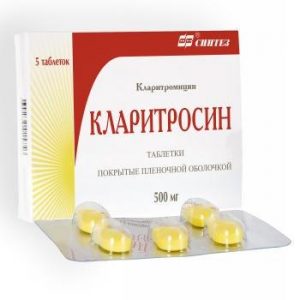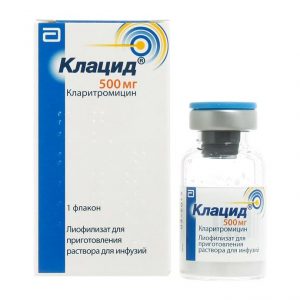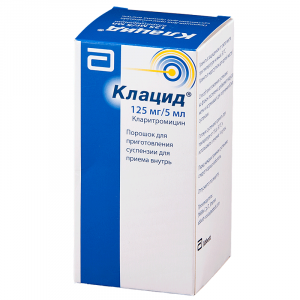Description
Release form
tablets
Packing
10 pcs.
Pharmacological action
Amosin is a broad-spectrum antibiotic of the group of semisynthetic penicillins. It is bactericidal. It inhibits transpeptidase, disrupts the synthesis of peptidoglycan (a supporting polymer of the cell wall) during the period of division and growth, and causes lysis of bacteria. Acid resistant.
Active against aerobic gram-positive bacteria: Staphylococcus spp. (with the exception of penicillinase producing strains), Streptococcus spp. aerobic gram-negative bacteria: Neisseria gonorrhoeae, Neisseria meningitidis, Bacillus anthracis, Listeria monocytogenes, Helicobacter pylori, Klebsiella spp.
Penicillinase-producing microorganisms are resistant to amoxicillin.
The action develops 15-30 minutes after administration and lasts 8 hours
Contraindications
– allergic diathesis
– bronchial asthma, hay fever
– infectious mononucleosis
– lymphocytic leukemia
– hepatic gastrointestinal tract disease (especially lacticitis, sarlprit – especially colitis) sensitivity to the components of the drug
– hypersensitivity to other penicillins, cephalosporins, carbapenemam)
– children under 3 years of age (for tablets and capsules)
Caution is advised to prescribe the drug during pregnancy, renal failure, and also if there is a history of bleeding.
Composition
1 tablet contains amoxicillin (in the form of trihydrate) 500 mg
Dosage and administration
Amosin is taken orally, before or after a meal. The dosage regimen is set individually, taking into account the severity of the disease, the sensitivity of the pathogen to the drug, the age of the patient.
Adults and children over 10 years old (with body weight> 40 kg) are prescribed 500 mg 3 times a day, and in severe cases of the disease – 0.75-1 g 3 times a day.
Children from 5 to 10 years of age are prescribed 250 mg 3 times a day, from 2 to 5 years old – 125 mg 3 times a day, up to 2 years of age – 20 mg / kg / day in 3 divided doses. The course of treatment is 5-12 days. For children under the age of 5 years, the drug is prescribed in the form of a suspension.
For the treatment of acute uncomplicated gonorrhea, Amosin is prescribed in a dose of 3 g once in the treatment of women, it is recommended that a repeated dose of this dose be taken.
In acute infectious diseases of the gastrointestinal tract (paratyphoid fever, typhoid fever) and biliary tract, with gynecological infectious diseases, adults are prescribed 1.5-2 g 3 times a day or 1-1.5 g 4 times a day.
With leptospirosis, adults are prescribed 500-750 mg 4 times a day for 6-12 days.
With salmonella carriage for adults – 1.5-2 g 3 times a day for 2-4 weeks.
For the prevention of endocarditis with minor surgical interventions, adults are prescribed a dose of 3-4 g 1 hour before the procedure. If necessary, a repeated dose is prescribed after 8-9 hours. In children, the dose is halved.
In patients with impaired renal function (CC from 15 to 40 ml / min), the interval between doses is increased to 12 hours, in the terminal stage of chronic renal failure (CC
Side effects
Allergic reactions: possibly – urticaria, skin hyperemia, erythema, angioedema, rhinitis, conjunctivitis rarely – fever, joint pain, eosinophilia, exfoliative dermatitis, multiforme exudative syndrome, erythematosus, erythematosus, erythematosus syndrome the disease in isolated cases is anaphylactic shock.
From the digestive system: dysbiosis, taste change, vomiting, nausea, diarrhea, stomatitis, glossitis, impaired liver function, moderate increase in hepatic transaminase activity rarely – pseudomembranous enterocolitis.
From the side of the central nervous system and peripheral nervous system: agitation, anxiety, insomnia, ataxia, confusion, behavior change, depression, peripheral neuropathy, headache, dizziness, convulsive reactions.
From the urinary system: rarely – interstitial nephritis.
From the hemopoietic system: leukopenia, neutropenia, thrombocytopenic purpura, anemia.
Other: shortness of breath, tachycardia, vaginal candidiasis, superinfection (especially in patients with chronic diseases or reduced body resistance).
Drug interactions
Antacids, glucosamine, laxatives, food, antibiotics of the aminoglycoside group, while used, slow down and reduce the absorption of amoxicillin, ascorbic acid – increases its absorption.
Bactericidal antibiotics (including aminoglycosides, cephalosporins, cycloserine, vancomycin, rifampicin) are synergistic with amoxicillin bacteriostatic drugs (macrolides, chloramphenicol, lincosamides, tetracyclines, sulfonamides) – antagonism.
Amoxicillin with simultaneous use increases the effectiveness of indirect anticoagulants (suppresses the intestinal microflora, reduces the synthesis of vitamin K and the prothrombin index) reduces the effectiveness of estrogen-containing oral contraceptives, ethinyl estradiol (risk of developing menstrual bleeding), as well as drugs that metabolize para-aminoben .
Diuretics, allopurinol, oxyphenbutazone, phenylbutazone, NSAIDs, and drugs that block tubular secretion, while used with Amosin, reduce tubular secretion, increase the concentration of amoxicillin.
With the simultaneous use of Amosin with allopurinol, the risk of developing a skin rash increases.
Amoxicillin with simultaneous use reduces clearance and increases the toxicity of methotrexate.
Amoxicillin with simultaneous use enhances the absorption of digoxin.
Storage Conditions
Keep out of the reach and sight of children, in a dry, dark place.
Expiration
2 years.
active substance
Amoxicillin
Terms leave around drugstore
prescription
lekarstvennaja tablet form
Appointment
Adult prescribed by a doctor, children on prescription, Children over 10 years of age




